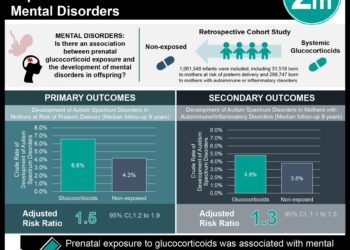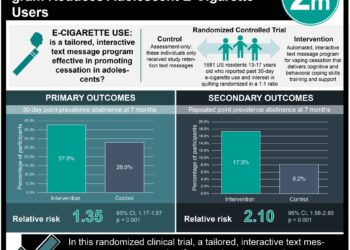Clinical presentation, treatment, and short-term outcomes of lung injury associated with e-cigarettes or vaping
1. Lung injury associated with e-cigarettes or vaping is a new disease entity that can be treated effectively with steroids; however, residual lung abnormalities often persist.
Evidence Rating Level: 1 (Excellent)
There is currently an outbreak of lung injury associated with e-cigarettes or vaping (E-VALI or VALI) in the USA. The objective of this prospective observational cohort study was to describe the clinical course, treatment, and short-term outcomes of E-VALI. Data was collected on 60 patients with E-VALI secondary to vaping exposure to nicotine, tetrahydrocannabinol, or both, from different hospitals throughout the state of Utah. A case series definition of pulmonary infiltrates (on chest radiograph or chest CT, or both) in a patient with a history of e-cigarette use or vaping in the 90 days before symptom onset, and exclusion of an alternative diagnosis, was used. Overall, frequency of vaping varied from one or two times per week to over 50 times per day. 23% of patients had a history of asthma, and 32% had a history of depression or anxiety, but otherwise, patients did not have significant comorbidities. 88% of patients presented with constitutional symptoms, 98% with respiratory symptoms, and 90% with gastrointestinal symptoms. Tachycardia (83%), elevated white blood cell count (>11,000 per mm3) (77%), and tachypnea (72%) were the most common clinical signs. Notably, when measured, inflammatory markers were often severely high, with a median C-reactive protein concentration of 31 mg/L (IQR 21 to 33), and a median erythrocyte sedimentation rate of 92 mm/h (IQR 65 to 103). 55% of patients were admitted to the intensive care unit (ICU). Patients were treated primarily with antibiotics (90%), steroids (95%), and supplemental oxygen (88%). The main therapy that treating clinicians believed led to rapid improvement within days was steroids. Ten percent of patients were readmitted to an ICU or hospital within 2 weeks, half of whom had relapsed with vaping or e-cigarette use. Of 26 patients who were followed up within 2 weeks, despite clinical and radiographic improvement in all, 67% (10 of 15) had residual abnormalities on chest radiographs, and 67% (6 of 9) had residual abnormalities on pulmonary function testing. Two patients died, and lung injury associated with e-cigarettes or vaping was thought to be a contributing factor, but not the primary cause of death, for both. In summary, this study suggests that E-VALI is associated with respiratory, gastrointestinal and constitutional symptoms, and is often associated with residual radiographic and spirometric abnormalities despite short-term improvements with treatment.
Click to read the study in Lancet
Image: PD
©2019 2 Minute Medicine, Inc. All rights reserved. No works may be reproduced without expressed written consent from 2 Minute Medicine, Inc. Inquire about licensing here. No article should be construed as medical advice and is not intended as such by the authors or by 2 Minute Medicine, Inc.







